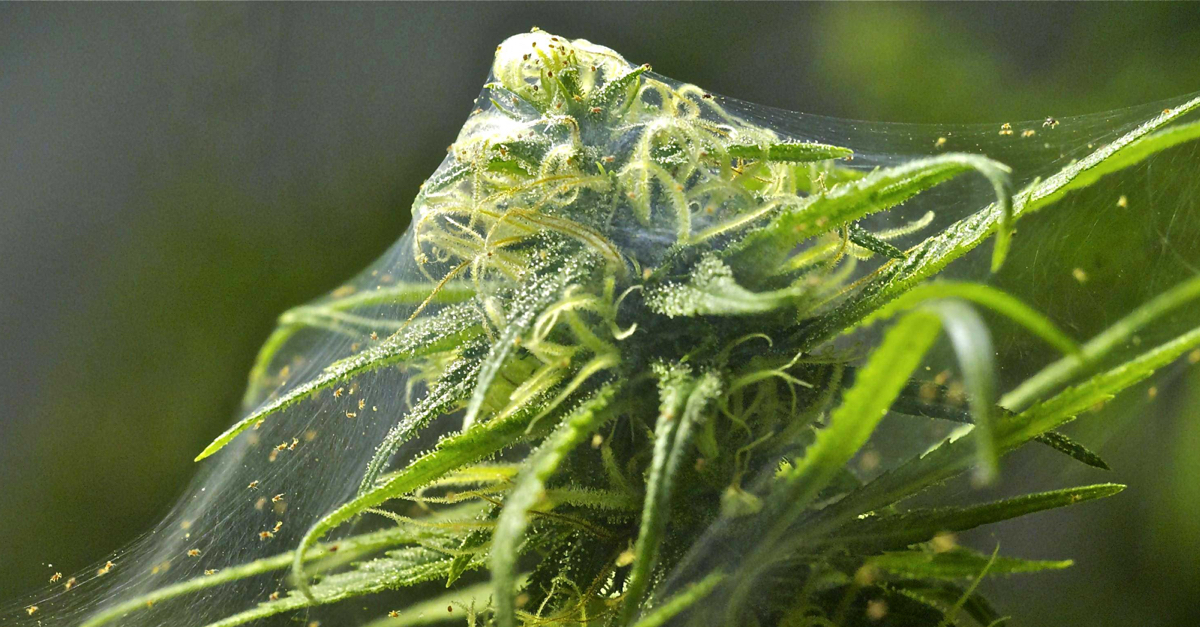In this series of articles, Growers Network talks about a few of the most common Cannabis pests you need to look out for. Today’s topic: Spider Mites.

Garden pests are a pain and Cannabis certainly has no shortage of pests. So for today’s pest spotlight we’re going to discuss spider mites, a common pest you may find yourself dealing with in a Cannabis grow.
Spider Mites

What are they?
Spider mites refer to several species of arachnids that live on the underside of leaves, feeding on the foliage and damaging the plants. In cannabis, spider mites can result in low yields and and in extreme cases, total plant death.
Editor’s Note: All mites are arachnids. That does not mean that you can see them with your naked eyes!
What to Look For
Spider mites are most often detected on the underside of leaves. Affected leaves can appear spotted or striped due to mite feeding with heavily impacted leaves turning yellow and dying completely. An additional sign is their eponymous webbing, a silk secretion left on the underside of leaves.
How to Treat/Prevent
The first line of defense against mites is diligent monitoring. If you find spider mites early, they can be removed before any real damage has occurred to your plant, or at least minimal damage. Additional controls include introducing predatory species such as the ladybug, the minute pirate bug, or even Phytoseiulus persimilis, another mite species that will kill the spider mites and leave your plants alone. There are many safe, organic pesticides available, as well as miticides, however, these miticides are often toxic, and we typically don’t recommend them for a consumable product such as Cannabis.
Editor’s Note: If you are able to see the webbing with your naked eye, you are too late in addressing the problem. By that point, the infestation will likely be so bad that the only way to correct the problem is to slash and burn any plant that appears infested.
Now you know your spider mite basics. Make sure to check out the rest of the articles in our Pest Spotlight series.
Happy Growing!
10 Best Gift Ideas for Cannabis Connoisseurs and Growing Aficionados (2022)
December 7, 2022Developing and Optimizing a Cannabis Cultivation System
December 14, 2021Dealing with Insomnia: How Can CBD Help?
December 10, 2020Your Guide to Sleep and CBD
December 7, 2020
Do you want to receive the next Grower's Spotlight as soon as it's available? Sign up below!

Do you have any questions or comments?

About the Author
Chris DeWildt is a graduate of Grand Valley State University and Western Kentucky University. He worked in education and publishing for ten years before joining the team at Growers Network.